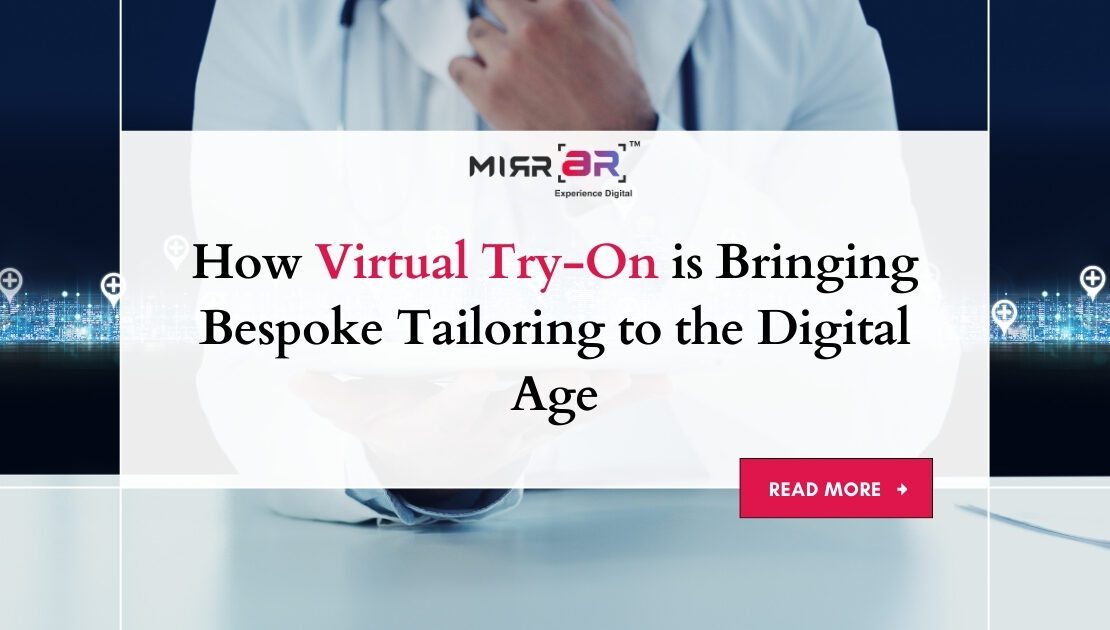
In a world where personalization is no longer a luxury but an expectation, bespoke tailoring is making a grand digital comeback—powered by Virtual Try-On (VTO) technology. What once required in-person fittings, weeks of trial-and-error, and tailor visits is now being transformed by augmented reality (AR), artificial intelligence (AI), and 3D visualization. With virtual try-on, the art of custom clothing is not only preserved but amplified in a way that fits the fast-paced, digital-first lifestyle of today’s consumers.
The Legacy of Bespoke Tailoring
Bespoke tailoring has always been a symbol of exclusivity, craftsmanship, and precision. Clients visit their tailors multiple times, choose their fabric, get measured, and wait patiently for their made-to-measure outfits. But as global shopping habits shift online and luxury brands try to meet consumer demand for both speed and personalization, traditional bespoke models have struggled to adapt. That’s where virtual try-on steps in.
Virtual Try-On: Redefining Personalization
Virtual Try-On tools enable customers to see how garments will look on their body, in real time, through digital overlays. Unlike static size guides or mannequin visuals, VTO uses body mapping, AI, and AR to simulate realistic drapes, fits, and finishes. For bespoke tailoring, this means consumers can now:
- Experiment with custom options (sleeve length, lapel width, patterns) in a virtual environment.
- Visualize garments from multiple angles.
- Receive AI-powered recommendations for the best fit based on body type and preferences.
Platforms like mirrAR are already making this possible, allowing luxury brands and retailers to offer personalized shopping at scale, without sacrificing the elegance of custom craftsmanship.
Enhancing the Made-to-Measure Experience
Virtual Try-On streamlines every step of the bespoke process. Here’s how:
- Measurements Made Easy: Customers no longer need to visit stores for measurements. AI-driven measurement tools integrated within VTO apps capture accurate body dimensions from the user’s camera feed or uploaded image.
- Instant Visualization: Instead of imagining how a fabric or cut will look, users can try variations instantly—choosing from hundreds of styles, colors, and textiles before locking in a final design.
- Real-Time Collaboration: Customers can co-create designs with remote tailors through shared VTO sessions. This interaction preserves the consultative spirit of bespoke tailoring while embracing digital convenience.
Revolutionizing Designer and Consumer Relationships
In traditional tailoring, the client-tailor relationship is central. With virtual try-on, this relationship becomes more collaborative and efficient. Designers gain insight into consumer preferences through data analytics, and consumers feel more engaged in the creative process.
Moreover, VTO platforms offer a unique opportunity for fashion houses to personalize at scale. What was once limited to elite clientele is now accessible to global shoppers—breaking down barriers to luxury fashion.
Sustainability Meets Style
Another compelling aspect of virtual try-on in bespoke tailoring is its environmental impact. By enabling customers to try before they buy, brands reduce returns, overproduction, and textile waste. Customization also promotes longevity—shoppers are more likely to cherish and keep garments made specifically for them.
This aligns with the values of modern consumers who seek both style and sustainability. With VTO, bespoke tailoring can finally meet the ethical expectations of today’s market without compromising its core promise of perfection.
Bridging the Online and Offline Gap
While e-commerce dominates modern fashion retail, many customers still crave the tactile experience of trying on clothing. Virtual try-on bridges this gap. With the help of smart mirrors and AR-based fitting rooms, physical stores can now offer digital customization tools—giving shoppers the best of both worlds.
Luxury fashion brands are increasingly integrating VTO into flagship stores to enhance their bespoke services. Imagine walking into a boutique, stepping in front of a smart mirror, and seeing your personalized outfit rendered in real time, complete with accurate fit and finish. This is no longer science fiction—it’s the new reality.
Future Possibilities: AI-Powered Design Assistants
As AI becomes more sophisticated, we’ll likely see virtual try-on evolve further. Virtual fashion assistants could suggest bespoke options based on weather, occasion, or even calendar events. They could also learn user preferences over time, refining fit recommendations and curating custom wardrobes.
Additionally, VTO could merge with blockchain and NFTs to authenticate and tokenize custom garments—offering digital ownership of unique designs in both the physical and virtual worlds.
Final Thoughts: Tailoring for the Digital Generation
Virtual Try-On is not just a tool; it’s a transformation. It democratizes bespoke tailoring, making it more accessible, efficient, and engaging. In doing so, it upholds the elegance of custom fashion while embracing the digital preferences of a new generation.
For luxury brands, adopting VTO technology is no longer optional—it’s essential for staying competitive, meeting sustainability goals, and creating meaningful customer experiences. As platforms like mirrAR continue to lead the way, we’re witnessing the rebirth of bespoke tailoring—tailored to perfection, powered by innovation.
